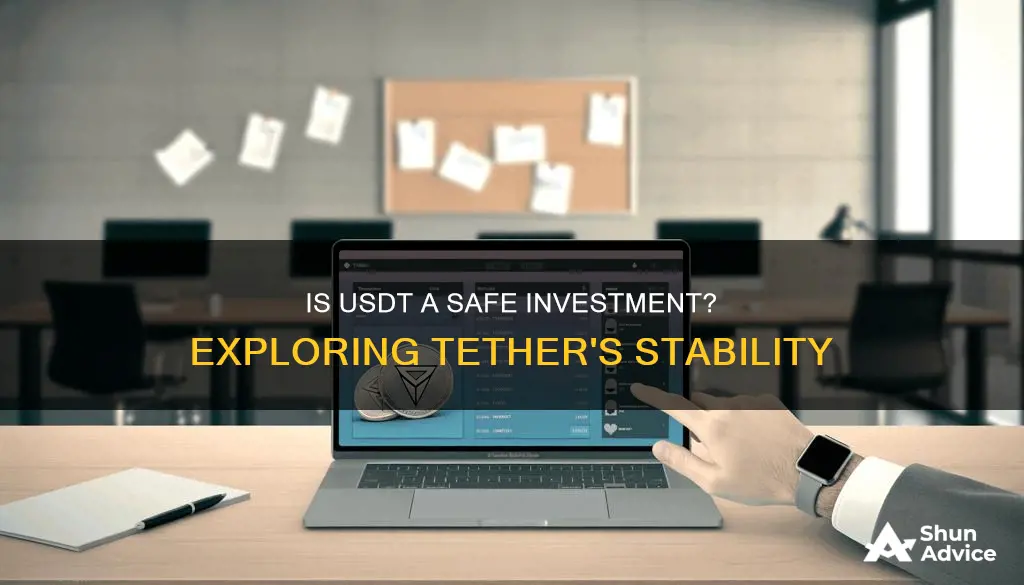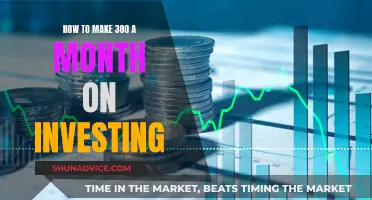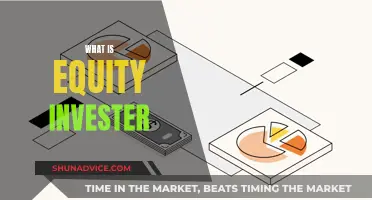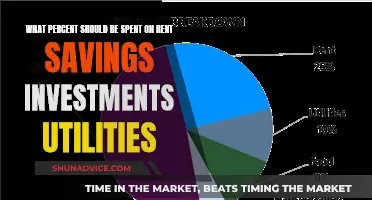
Tether (USDT) is a stablecoin pegged to the US dollar, meaning that the value of 1 USDT is always equal to 1 USD. This makes it a relatively stable asset in the fluctuating cryptocurrency market, and a popular choice for investors seeking stability. However, Tether has faced criticism for its lack of transparency around reserves, and regulatory and transparency issues remain a key risk factor for long-term holders. So, is USDT a safe investment?
| Characteristics | Values |
|---|---|
| Stable | USDT is a stablecoin designed to maintain a 1:1 peg with the US dollar, meaning its value is kept relatively stable compared to other cryptocurrencies. |
| Safe | USDT is considered a safe investment option in a volatile market. It is fiat-collateralized and its value is stable against the US dollar. |
| Accessible | USDT can be easily bought and sold on almost all cryptocurrency exchanges, through exchangers, or even within the Telegram messenger. |
| Hedge against volatility | USDT can be used to shield other cryptocurrencies in times of high volatility. |
| Regulatory concerns | USDT has faced criticism and regulatory concerns over its transparency and backing. |
| No long-term growth | USDT does not offer long-term growth or returns, unlike other volatile assets. |
What You'll Learn

USDT's stability and safety in a volatile market
USDT is a stablecoin designed to maintain a 1:1 peg with the US dollar, meaning its value is kept relatively stable compared to other cryptocurrencies. Unlike Bitcoin or Ethereum, which can experience significant price fluctuations, USDT's value is intentionally engineered to remain consistent, making it an attractive option for those seeking to protect their assets from volatile market swings.
USDT can be easily bought and sold on nearly all cryptocurrency exchanges, through exchangers, or even within the Telegram messenger. Its stable value and availability across multiple blockchains make it a popular and liquid investment choice. It is also highly versatile and can be used for a variety of purposes. For example, you can transfer funds between exchanges, making it a convenient tool for traders who want to move assets quickly.
USDT can also be used for investing, providing a stable store of value in a volatile market. It can be used to keep your cryptocurrency shielded in times of high volatility. For instance, if the market enters a sudden period of volatility, you can swap your Ethereum for Tether to protect it temporarily and store its value. Additionally, Tether allows users to send money across borders easily without the high fees associated with traditional banking systems.
However, it is important to note that USDT has faced some controversies and scepticism. There have been concerns about its lack of transparency regarding the reserves backing it. In 2023, during the USDC stablecoin crisis, USDT maintained its value against the US dollar, but its safety is heavily dependent on Tether's claims and reserves. While Tether has stated that USDT is backed by 100% reserves, primarily cash and cash equivalents, critics have questioned the validity of these claims. Therefore, while USDT offers stability and safety in a volatile market, it is crucial to carefully consider its backing risks and regulatory status before investing.
Understanding Investment Managers: Are They Fiduciaries?
You may want to see also

Tether's regulatory and transparency issues
Tether (USDT) has been one of the most controversial cryptocurrencies since its launch in 2014. While it has long operated in a regulatory grey area, there are signs that greater regulation and transparency may be on the horizon.
Tether has faced scrutiny from regulatory bodies and critics regarding the transparency and verifiability of its claimed fiat reserves. The company has repeatedly claimed that its tokens are backed 1:1 by US dollars, but it has failed to provide conclusive audits to support these assertions. Tether attempted an audit in 2018, but the law firm conducting it emphasised that their report should not be construed as an audit and that it did not conform to Generally Accepted Auditing Standards. Tether's general counsel stated that "an audit cannot be obtained" due to the risk involved for accounting firms. Tether's lack of transparency has led to concerns and criticism from investors and industry executives, who have called for regular audits to prove the company's reserve claims.
Tether has also faced regulatory issues regarding its role in potential market manipulation. In 2018, Bloomberg reported that US federal prosecutors were investigating whether Tether was used to manipulate the price of Bitcoin. Research by Griffin and Shams found that bitcoin prices increased after Tether minted new USD₮ during market downturns, suggesting an attempt to influence cryptocurrency prices. Tether has denied these claims, but the company's lack of transparency and past issues have undermined trust in its operations.
To restore confidence, Tether should undergo regular audits by accredited third-party firms and comply with emerging regulatory standards. Directly addressing past allegations, cooperating with authorities, and adopting policies that align with established financial institutions can also help to promote trust and ensure stability in the broader crypto ecosystem. While Tether has long operated in a regulatory grey area, increased oversight and scrutiny from bodies like the CFTC and the Federal Reserve appear to be on the horizon, indicating that tighter supervision and greater transparency may be inevitable for Tether.
Private Equity Investing: A Comprehensive Guide
You may want to see also

USDT's performance during the USDC de-peg
USDT is a stable and safe crypto to buy, offering flexibility, stability, and accessibility in the crypto market. It is easy to trade and acts as a hedge against volatility. It is also widely available on exchanges, making it a convenient option.
However, it is important to consider the backing risks before investing in USDT. As of October 2024, USDT had a market capitalization exceeding $119 billion, making it one of the most significant stablecoins in the crypto market. Its stable link to the US dollar adds to its widespread adoption.
USDT has maintained its position as one of the top stablecoins, despite facing some controversies and scepticism. One of the controversies was the artificial pumping of Tether into the cryptocurrency market to create liquidity. There have also been concerns about transparency and regulatory risks.
Now, let's focus on USDT's performance during the USDC de-peg:
USDT and USDC are the two largest stablecoins, with USDT being the largest by market capitalization. In March 2023, USDC experienced a de-pegging event when it lost its dollar peg, dropping to as low as 87 cents due to the Silicon Valley Bank (SVB) collapse. This event caused a significant impact on businesses using USDC for settlements or holding large volumes on their balance sheets.
During the USDC de-peg, some investors were forced to reduce their USDC holdings and traded them for other stablecoins like USDT. This increased demand for USDT contributed to its resilience. Despite the drop in USDC's value, the peg was restored within a few days, demonstrating the stablecoin's ability to recover quickly.
In summary, during the USDC de-peg, USDT benefited from investors seeking alternative stablecoins. Its market position and liquidity remained strong, further reinforcing its stability and performance relative to USDC.
Lucrative Investment Options in India for Your 10K
You may want to see also

Tether's backing risks and reserve controversies
Tether (USDT) is a stablecoin that is widely available on exchanges, making it a convenient option for traders. It is also easy to trade and acts as a hedge against volatility in the crypto market. However, Tether has faced controversies and scrutiny from regulators due to concerns about the reserves backing it.
Tether's reserves have been a subject of debate for years, with questions arising regarding the lack of transparency and validation of its USD reserves. As of 2021, Tether's $69 billion worth of stablecoins was supposed to be backed by USD reserves. However, no entity could validate this reserve, sparking concerns among investors and regulators. This lack of transparency has led to investigations and scrutiny, with Tether Limited, the company behind USDT, facing allegations of issuing stablecoins without sufficient cash reserves.
In response to the concerns, Tether released an asset breakdown of its reserve in May 2021, demonstrating increased transparency. Additionally, a paper trail backs the investment of $15 billion in cash and low-risk bonds, with the Bahamas-based Deltec Bank & Trust overseeing this portion of the reserves.
Despite these reassurances, controversies persist, and some investors remain cautious about Tether's stability and the potential impact on the broader cryptocurrency market. The stablecoin's relevance and extensive use in crypto circles cannot be overlooked, but the uncertainties surrounding its reserves continue to be a factor that investors should consider when evaluating the risks associated with investing in Tether.
A Guide to Investing in India's Wedding Hall Industry
You may want to see also

USDT's advantages for investors outside the US
USDT, or Tether, is a stablecoin, a type of cryptocurrency designed to minimise price volatility. It is pegged to the US dollar, meaning its value is designed to always be equivalent to $1 USD. This makes it a relatively stable asset in a fluctuating market.
- Stability and Liquidity: USDT's peg to the US dollar makes it a stable store of value in a volatile market. This stability, combined with its widespread use and availability on multiple exchanges, gives USDT high liquidity. This makes it easy for investors to buy, sell, or trade USDT.
- Faster Transactions: USDT transactions are faster than traditional banking systems because they use blockchain technology. This enables quicker transfers and settlements.
- Decentralization: USDT operates in a decentralised cryptocurrency ecosystem, giving investors access to the advantages of blockchain technology.
- Risk Hedging: During volatile market periods, investors can use USDT as a hedge to protect their money from severe price swings.
- Seamless Exchanges: USDT enables quick financial transfers between various cryptocurrency exchanges, bypassing the slower and more expensive traditional banking system.
- Flexibility: USDT can be used for a variety of purposes, including trading, investing, and making payments. It can also be used to send money across borders easily and with lower fees compared to traditional banking systems.
- Accessibility: USDT can be easily bought and sold on most cryptocurrency exchanges, through exchangers, or even within messaging platforms like Telegram.
- High-Interest Rates: Some platforms offer high-interest rates, typically ranging from 6% to 12%, for storing USDT on their platforms.
- No Taxable Event: In many cases, converting US dollars to USDT is not a taxable event, as it is simply an exchange between fiat currency and cryptocurrency. However, tax laws and regulations may vary depending on the investor's location.
While USDT offers these advantages, it is important to remember that it is not without its risks. There have been concerns about the transparency of its currency reserves, and it faces the risk of depegging, where its value may deviate from the $1 peg.
Understanding the Benefits of Investing without Equity Premium
You may want to see also
Frequently asked questions
USDT is considered a stable and safe crypto to buy. It is easy to trade and can act as a hedge against overall volatility.
USDT can be easily bought and sold on almost all cryptocurrency exchanges, exchangers, or even within the Telegram messenger. It is highly versatile and can be used for a variety of purposes, including transferring funds between exchanges and sending money across borders without high fees.
USDT has been criticized for its lack of transparency around reserves. In 2021, Tether was fined for making false claims about its reserves, and it has never been audited by a reputable accounting firm. There is also regulatory uncertainty surrounding USDT, as US regulators have been cracking down on crypto businesses.
USDT is the world's biggest stablecoin and is ranked third in terms of stability, after USD Coin (USDC) and Binance USD (BUSD). USDT is a fiat-collateralized stablecoin, which means its value against the US dollar depends on whether Tether holds appropriate reserves.
As of 2023, there are questions surrounding the safety of investing in stablecoins, including USDT, due to recent controversies and concerns about transparency and regulatory issues. However, during the USDC stablecoin crisis, USDT maintained its value relative to the US dollar, and analysts consider it one of the safest stablecoins.







